In the transistor biasing using diode below assume that at time t1 the circuit is stable and apply KCL at the junction of the three devices you have:
IR1 = IB1 + ID1
(the index 1 just to indicate it's at the time t1.)
Now let's assume that after some time for example at t2 for some reason VBE suddently decreases and this causes IB and ID decrease as a result. However, IR = (VCC - VBE)/R increases.
Thus,
IB2 < IB1
ID2 < ID1
IR2 > IR1
However, KCL at the node at t2 should also be right meaning that:
IR2 = IB2 + IR2
This doesn't seem to be possible as both IB2 and IR2 decrease while IR2 increases compared to their values at t1.
So what is wrong with this reasoning?
How can KCL be satisfied here?

